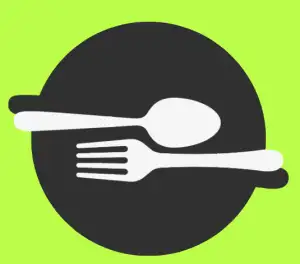Unlock the Flavors of Italy with Our Delectable Passata Recipe

- Benefits of Using Passata in Cooking
- Step-by-Step Guide to Making Passata at Home
- Choosing the Right Tomatoes for Passata
- Preparing the Tomatoes for Passata
- Cooking and Straining the Tomatoes
- Storing and Preserving Passata
- Creative Ways to Use Passata in Recipes
- Tips and Tricks for Using Passata in Cooking
Passata, a traditional Italian tomato puree, is a versatile ingredient that adds depth and richness to countless dishes. Made from ripe tomatoes that have been cooked and strained, passata is known for its smooth texture and vibrant flavor. Whether used as a base for pasta sauces, soups, or stews, passata brings a distinct taste of Italy to your culinary creations. Its versatility makes it an essential pantry staple for any aspiring chef. So, let's unlock the flavors of Italy with our delectable passata recipe!
Benefits of Using Passata in Cooking
Passata, a versatile tomato puree, offers numerous benefits when used in cooking. Firstly, it adds a rich and vibrant flavor to dishes, enhancing the taste of soups, stews, and sauces. Its smooth texture also helps to create a velvety consistency in recipes.
Furthermore, passata is a time-saving ingredient as it eliminates the need for peeling and deseeding tomatoes. With passata readily available, you can skip these tedious steps and focus on creating delicious meals.
Passata is also a great source of lycopene, an antioxidant that has been linked to various health benefits such as reducing the risk of certain cancers and promoting heart health. It is also low in calories and fat-free, making it an excellent choice for those watching their weight or following a healthy eating plan.
In addition to its nutritional value, passata is incredibly versatile in the kitchen. It can be used as a base for pasta sauces, pizza toppings, or even as a marinade for meats. Its concentrated flavor allows you to add depth to your dishes without overpowering other ingredients.
By incorporating passata into your cooking repertoire, you can elevate the flavors of your favorite Italian dishes while enjoying its numerous health benefits.
Step-by-Step Guide to Making Passata at Home
1. Start by selecting ripe, juicy tomatoes. Roma or San Marzano tomatoes are ideal for passata due to their rich flavor and low water content.
2. Wash the tomatoes thoroughly and remove any stems or blemishes.
3. Cut a small "X" on the bottom of each tomato to make it easier to peel later.
4. Bring a large pot of water to a boil and carefully drop the tomatoes into the boiling water. Allow them to cook for about 30 seconds or until you see the skin starting to peel away.
5. Using a slotted spoon, transfer the tomatoes into an ice bath to cool them down quickly and stop the cooking process.
6. Once cooled, peel off the skin from each tomato using your hands or a knife.
7. Cut the peeled tomatoes in half and remove any seeds if desired, although leaving some seeds will add texture to your passata.
8. Place a large saucepan over medium heat and add the peeled and seeded tomatoes along with any accumulated juices.
9. Cook the tomatoes for about 30 minutes, stirring occasionally, until they have softened and released their juices.
10. Use an immersion blender or food processor to puree the cooked tomatoes until smooth. Alternatively, you can use a food mill or sieve to strain out any remaining seeds or pulp for a smoother consistency.
11. Return the pureed passata back into the saucepan and simmer over low heat for another 15-20 minutes, allowing it to thicken slightly.
12. Season with salt and pepper according to your taste preferences or add herbs like basil, oregano, or garlic for added flavor if desired.
13. Let the passata cool completely before transferring it into sterilized glass jars with tight-fitting lids for storage.
14. Store your homemade passata in a cool, dark place such as a pantry or cellar. It can be refrigerated for up to a week or frozen for several months.
By following these simple steps, you can create your own flavorful passata at home, ready to enhance your favorite Italian dishes and unlock the authentic flavors of Italy in your cooking.
Choosing the Right Tomatoes for Passata
When it comes to making passata, choosing the right tomatoes is crucial. Look for ripe, juicy tomatoes with a deep red color. Varieties such as Roma, San Marzano, or Amish Paste are ideal due to their high pulp content and low water content. These tomatoes have a rich flavor and are naturally sweet, which will enhance the taste of your passata. Avoid using overripe or mushy tomatoes as they can affect the texture and taste of the final product. Remember, the quality of your tomatoes will directly impact the quality of your passata, so choose wisely!
Preparing the Tomatoes for Passata
To prepare the tomatoes for passata, start by washing them thoroughly under cold water. Remove any stems or leaves and cut out any blemishes or bruises. If desired, you can also peel the tomatoes by blanching them in boiling water for a few seconds, then transferring them to an ice bath to cool. The skins should easily slide off.
Next, quarter the tomatoes and remove the seeds and excess liquid. This step is important as it helps concentrate the flavor of the passata. You can do this by gently squeezing each quarter over a bowl to catch the juice and seeds, or by using a spoon to scoop them out.
Once you have removed the seeds and excess liquid, transfer the tomato quarters to a large pot. It's important to use a pot with high sides to prevent splattering during cooking. At this point, you can also add any desired seasonings such as salt, pepper, garlic, or herbs like basil or oregano.
Now you're ready to cook the tomatoes and turn them into passata. Heat the pot over medium-low heat and simmer the tomatoes for about 1-2 hours, stirring occasionally. The goal is to reduce the tomatoes down until they become thick and pulpy.
During cooking, you may need to adjust the heat if necessary to maintain a gentle simmer. Be sure not to let it boil vigorously as this can cause scorching.
Once cooked down, remove the pot from heat and let it cool slightly before proceeding to strain the mixture through a fine-mesh sieve or food mill. This will help remove any remaining seeds or skin particles and give your passata a smooth consistency.
Press down on the tomato pulp with a spoon or spatula to extract as much liquid as possible while discarding any solids left behind in the sieve.
Congratulations! You have successfully prepared your homemade passata from fresh tomatoes. Now it's time to store it properly so that you can enjoy its flavors in various recipes.
Cooking and Straining the Tomatoes
Once the tomatoes have been blanched and peeled, it's time to cook them down into a thick, flavorful passata. In a large pot, heat some olive oil over medium heat. Add in the peeled tomatoes and gently crush them with a wooden spoon to release their juices.
Simmer the tomatoes uncovered for about 30 minutes, stirring occasionally to prevent sticking. This will help concentrate the flavors and reduce the liquid content. You can also add some salt and herbs like basil or oregano to enhance the taste.
After simmering, remove the pot from heat and let it cool slightly. Using an immersion blender or a food processor, puree the cooked tomatoes until smooth. If you prefer a chunkier passata, you can skip this step or pulse it less.
Next, it's time to strain the passata to remove any seeds or pulp. Place a fine-mesh sieve or cheesecloth over a large bowl or another pot. Pour the pureed tomato mixture into the sieve and let it strain naturally for at least an hour. You can gently press down on the solids to extract more liquid.
Once strained, transfer the passata into sterilized jars or bottles for storage. It can be refrigerated for up to one week or frozen for longer shelf life. Make sure to leave some headspace in each container as passata expands when frozen.
Now that you've mastered the art of making passata, you're ready to unlock its incredible flavors in your cooking!
Storing and Preserving Passata
Once you have made your delicious passata, it's important to store it properly to ensure its freshness and flavor. Here are some tips for storing and preserving your homemade passata:
1. Refrigeration: If you plan to use the passata within a week, you can store it in an airtight container in the refrigerator. Make sure to label the container with the date of preparation.
2. Freezing: Passata can be frozen for longer-term storage. Pour the passata into freezer-safe containers or zip-top bags, leaving some space for expansion. Seal tightly and freeze for up to six months.
3. Canning: Another option is to can your passata for even longer shelf life. Sterilize glass jars and lids by boiling them in water for 10 minutes. Fill the jars with hot passata, leaving about 1/2 inch of headspace. Wipe the rims clean, seal tightly, and process in a boiling water bath for 35-40 minutes.
4. Properly sealed jars should be stored in a cool, dark place away from direct sunlight. Check the seals before using any canned passata – if the lid pops when pressed down, it means it hasn't sealed properly and should be refrigerated or used immediately.
By following these storage methods, you can enjoy your homemade passata throughout the year and add that authentic Italian flavor to your dishes whenever you desire!
Creative Ways to Use Passata in Recipes
1. Classic Pasta Sauce: Passata is the perfect base for a rich and flavorful pasta sauce. Simply sauté garlic and onions, add passata, herbs, and spices of your choice, and simmer for a delicious sauce to toss with your favorite pasta.
2. Pizza Perfection: Spread passata on pizza dough as a tasty alternative to traditional tomato sauce. Top with your favorite toppings and cheese for a mouthwatering homemade pizza.
3. Soups and Stews: Add passata to soups and stews for an extra depth of flavor. It works particularly well in tomato-based soups like minestrone or vegetable soup.
4. Bruschetta Bliss: Mix passata with fresh basil, garlic, olive oil, and salt for a delightful bruschetta topping. Spoon it onto toasted baguette slices for a quick and easy appetizer.
5. Meatball Marvels: Simmer meatballs in passata for a rich and savory dish. The tomatoes will infuse the meatballs with incredible flavor while keeping them moist.
6. Baked Egg Delight: Create a delicious baked egg dish by spooning passata into individual ramekins, cracking an egg on top, and baking until the eggs are set. Serve with crusty bread for a satisfying breakfast or brunch option.
7. Vegetable Casseroles: Use passata as a base for vegetable casseroles like ratatouille or caponata. The concentrated tomato flavor will enhance the other vegetables in the dish.
8. Chicken Parmesan Twist: Instead of using regular tomato sauce, try using passata as the base for your chicken parmesan recipe. The smooth texture of passata will coat the chicken perfectly while adding an authentic Italian taste.
By incorporating passata into these creative recipes, you can unlock the true flavors of Italy in your cooking repertoire!
Tips and Tricks for Using Passata in Cooking
1. Enhance the flavor: Add herbs like basil, oregano, or thyme to your passata while cooking to enhance its flavor.
2. Use as a base: Passata can be used as a base for various Italian dishes like pasta sauces, soups, stews, and even pizza sauce.
3. Adjust consistency: If you prefer a thicker sauce, simmer the passata for longer to reduce its liquid content. For a thinner consistency, add a little water or broth.
4. Freeze in portions: Freeze passata in ice cube trays or small containers for easy portioning when needed in recipes.
5. Mix with other ingredients: Combine passata with other ingredients like garlic, onions, or vegetables to create flavorful sauces or dips.
6. Marinate meats: Use passata as a marinade for meats like chicken or pork before grilling or roasting to infuse them with rich tomato flavors.
7. Make homemade ketchup: Mix passata with vinegar, sugar, and spices to create your own homemade ketchup without any artificial additives.
8. Add depth to dishes: Use passata as a secret ingredient in dishes like lasagna or meatballs to add depth and richness to the overall flavor profile.
Remember, experimentation is key when using passata in cooking. Don't be afraid to get creative and explore different ways to incorporate this versatile tomato puree into your favorite recipes!
In conclusion, passata is a versatile tomato puree that can elevate your cooking to new heights. Its rich flavor and smooth texture make it a perfect base for soups, sauces, and stews. By making your own passata at home, you have full control over the quality and freshness of the tomatoes used.
With its numerous health benefits and ability to enhance the flavors of any dish, passata is a must-have ingredient in every kitchen. Whether you're making a classic marinara sauce or experimenting with new recipes, passata adds depth and complexity to your dishes.
So why not unlock the secrets of passata and take your culinary skills to the next level? With our step-by-step guide and helpful tips, you'll be able to create delicious homemade passata that will impress even the most discerning palates. Get ready to embark on a flavorful journey through Italy with our delectable passata recipe!
Published: 20. 11. 2023
Category: Food



